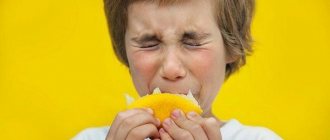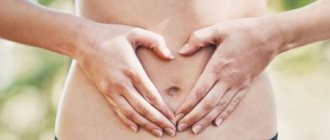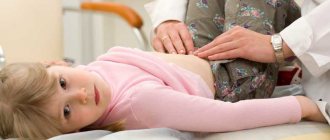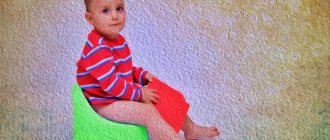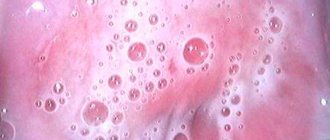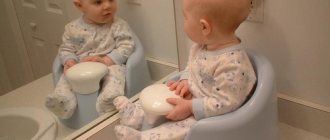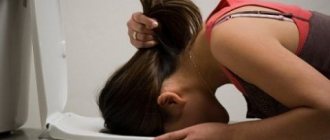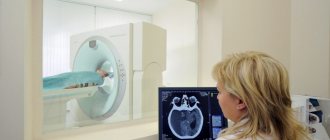In babies, one of the most striking indicators of health is the color of stool. The consistency and coloring of feces largely depends on the nutrition and functional maturity of the digestive organs. Some changes are considered acceptable, and at times, changes in the color of stool should prompt you to see a doctor.
Changes in this health indicator can vary over a fairly wide range, and it is important for parents to know when it is simply impossible to ignore them. One of the common cases of change is the appearance of yellow stool in the baby. If you correctly assess the consistency of the stool at this moment and the general condition of the child, then you can understand the situation with metabolic processes, as well as the proper functioning of the digestive organs.
When you shouldn't worry
Normally, a light yellow color of stool is observed in infants. This can be explained by the fact that the nutrition of children at this age is based on the consumption of large amounts of milk (mother's or cow's). And since food is consumed in liquid form, the stool has a mushy consistency, which is easily confused with diarrhea. Moreover, the younger the baby, the thinner his stool.
Another reason is the imperfection of the digestive system.
At one year of age, the pancreas does not secrete enough enzymes to digest food, and the liver does not produce the amount of bile necessary to color stool brown. So, in the absence of other symptoms of intestinal infection or other pathologies, loose and pale stools are normal.
To dispel all doubts, you can consult with your local pediatrician.
Normal color of stool
There are many factors that influence the color of a baby's stool.
It is worth noting that the color of feces is given by bilirubin, a pigment in bile that passes through the liver filters and then enters the intestines and bladder. This pigment is responsible for the color of stool, from lighter to richer. If meat products predominate in the diet, the color of the stool will be the darkest; yellow stool is obtained if dairy products predominate in the menu.
For example, a newborn's stool is very dark, almost black. This is original stool, called meconium. After just a couple of days it brightens and by the time the baby is a week old it becomes yellow, more like an apricot hue. Until about three months of age, the baby’s digestive system continues to form, so all this time, feces can have different shades, even be reddish or with a green tint. Starting at three months, yellow stools are considered normal for a breastfed baby. In babies whose primary diet is formula, the color of the stool is usually darker, brown or gray, depending on the components contained in the baby food.
Children aged about a year and older already eat quite a variety of foods, in this case the color of the child’s stool is directly dependent on the foods he eats. Tomatoes and beets can give the stool a reddish tint, the meat may be dark, and orange stool may indicate that the baby ate carrots or pumpkin.
Fact! Quite often, a mother, worried about the health of her baby and the strength of his bones, practically feeds the baby cottage cheese and sour cream, and then worries why the color of the stool is too light, without even assuming that the high calcium content in the food led to this.
Dangerous causes of light diarrhea
In medical practice, there are four main causes of pale or bright yellow diarrhea:
- Intestinal infections. With this pathology, yellow diarrhea in a child is often accompanied by vomiting, abdominal pain and increased body temperature. In some cases, blood or mucous contents may be found in the stool.
- Rotavirus infection. The main difference between this condition and intestinal infections is the absence of pain and a persistent increase in temperature that cannot be normalized with antipyretic drugs. Yellow diarrhea in a child, characteristic of the acute onset of the disease, is replaced by watery gray stools. Excessive bowel movements can cause dehydration in a small body.
- Food allergies. The most common allergens are chocolate, strawberries, oranges, eggs and cow's milk. In addition to being highly allergenic, these products have a laxative effect. And the active substances contained in their composition irritate the intestinal mucosa, causing their accelerated excretion along with feces.
- Whipple's disease. This is a dangerous disease characterized by long periods of light yellow diarrhea with an increase in body temperature in the initial stage of the disease. To date, the main cause of the pathology is unknown. It is assumed that the disease is based on a violation of fat metabolism, but this is by no means the only reason for the spread of infection. In the absence of serious inpatient treatment, the disease leads to dehydration, weight loss, damage to cells of the nervous system, loss of vision, and disruption of the heart and other organs.
Whipple's disease primarily affects men between 40 and 50 years of age. But its manifestation in patients of other age categories cannot be excluded. Thus, in medical practice, repeated episodes of diseases in children aged three years and older are known.
Key Recommendations: Action Plan for Parents
Do not panic. Light diarrhea in a child does not always indicate any pathology. And even if this is so, then your lamentations will do little to help the baby. We need to act.
The first thing you need to do is assess the situation. Your task is to help the child, and not to become hysterical about supposed diagnoses. First you need to measure the baby's temperature. If it rises to 380 or higher, call a doctor. If the baby refuses food and water, and diarrhea is accompanied by vomiting, do not wait for the local pediatrician, but immediately call an ambulance. If these symptoms persist for a long time, the child may become dehydrated, which will lead to the development of serious complications.
If a child has yellow diarrhea without fever, the color of the urine has not changed, and in general the baby feels well, most likely the reason for the changes in the character of the stool lies in the diet. So carefully study your diet by reviewing the dishes on the menu and how they are prepared.
Correcting a child's diet allows the color of stool to normalize within two days. During this period, you need to carefully monitor the condition of the baby in order to detect any changes in his behavior and health in time.
Prevention
To prevent troubles associated with the digestive system, it is necessary to teach your child:
- observe the rules of personal hygiene;
- do not lick dirty objects, especially those located outdoors;
- Do not eat unwashed vegetables, fruits and berries.
Following these rules will not prevent diarrhea or abdominal pain. However, by following them, you can significantly reduce the risk of problems with your baby’s digestive system.
We recommend: How and how to properly treat diarrhea in a child with ARVI?
Feeding a child with loose yellow stools
For any disease, it is necessary to follow a gentle diet. And even more so with indigestion. If no infection is detected, and after a doctor’s examination you have been diagnosed with a food allergy or indigestibility of any foods, reconsider the young patient’s diet.
- Light-colored feces in infants are a consequence of the high fat content in the diet. For nursing mothers, all fatty foods and possible allergens for the baby should be excluded from the diet.
- After this, to normalize stool, increase the number of feedings, reducing the duration of each of them. According to modern standards, it is recommended to breastfeed infants on demand, so adhere to these standards. Dehydration is of no use to you now.
- Maintain drinking regime. If a child has yellow diarrhea, regardless of the cause and age, water is vital to normalize the condition. Lack of fluid in the body can lead to irreversible consequences.
- For older children, it is necessary to reduce the portion size, maintaining the total calorie content and nutritional value of the daily diet, dividing it into five to six meals. With a smaller volume, food will be easier to absorb by the body.
- All dishes must be cooked by boiling or steaming. They should be served crushed, preferably passed through a blender to facilitate the digestion process.
- The food temperature should be comfortable for the body. Hot or cold food is poorly processed by the body and will take longer to digest.
- During diarrhea and the recovery period, completely exclude fresh vegetables and fruits, fried and fatty foods, and milk from the children's diet. Reintroduce it into the diet gradually and in small quantities.
To avoid possible recurrence of episodes of diarrhea, remember to eat healthy for your child at any age.
Medications
It is better not to get carried away with drug therapy at your own discretion, even for an adult. And even more so when it comes to the health of the child. Therefore, before purchasing medications, be sure to consult your pediatrician. Not all modern developments of pharmaceutical companies are approved for use in childhood. And he will help you choose the most effective and at the same time gentle means, eliminating possible contraindications and risks.
Most often, for yellow diarrhea of non-infectious origin, treatment with the following medications is indicated:
- Sorbent for binding and removing toxins, breakdown products and undigested food residues. These are smecta, polysorb, enterosgel or regular activated carbon.
- Probiotics and prebiotics to normalize intestinal microflora. Lactiale, lacidophil, bifidumbacketrin and others.
- Antihistamines of the latest generation for diarrhea due to food allergies. For example, tsetrin, zodak, alerzin.
- Enzyme preparations for yellow, loose stools caused by fermentopathy. Panzinorm, Creon, Pancreatin. This class of medications can only be prescribed on the recommendation of the attending physician.
Treatment of intestinal infections is carried out with the help of antibiotics that are active against the bacteria that caused the disorder. A hospital is a prerequisite for the safety and effectiveness of the therapy.
Medicines with antidiarrheal effects and traditional prescriptions that bind children are not prescribed. They interfere with the natural elimination of toxins and pathogens.
And remember that diarrhea in a child always requires increased attention. It doesn’t matter what color the stool is, its character and consistency should already alert you. Especially if, even if you follow the advice described above, normalization of the baby’s condition is not observed within two days.
What helps with diarrhea, quick methods of treatment
Parents should provide proper first aid for diarrhea. To do this, you need to know how to act, how to help, what to pay attention to.
If yellow diarrhea is observed during the day, monitor the baby’s well-being; you should not leave the child unattended. What to do if you have diarrhea, recommendations for parents:
- Offer water. If the child refuses the first time, offer it later. During diarrhea, thirst occurs due to loss of fluid.
- Adjust your diet if you have an upset stomach. If a symptom is observed in a baby, the mother must follow the diet herself. If your baby is fed artificially, you may need to reconsider the choice of formula.
- Measure your body temperature periodically and do not allow your temperature to rise too high. If there is diarrhea with body temperature, it is necessary to give an antipyretic and wipe the forehead, neck, and axillary pads with a weak vinegar solution.
- During loose stools, appetite worsens and nausea is possible. Offer food in small portions. Nutrition should be correct, gentle and age-appropriate.
- If diarrhea is caused by food poisoning, it is necessary to give sorbents (Activated carbon, Polysorb, Enterosgel).
- To restore the functioning of the stomach, probiotics (Enterozermina, Bifidumbacterin) are used.
Home remedies to combat diarrhea
If a child has loose stools without fever, and he feels well, it is permissible to try to normalize the functioning of the stomach using folk methods.
To strengthen your stool, you can prepare rice water at home. It has a beneficial effect on the digestive system and has an astringent effect. To prepare, you need to pre-soak 2 tablespoons of rice in cold water. Place a saucepan on the fire, pour in a glass of water, and bring to a boil. Place washed rice in boiling water, cook for 40 minutes, stir occasionally. Cool, strain. Take a tablespoon of the decoction three times a day. Helps quickly strengthen the stool.
Dill water. Used from birth. Helps reduce gas formation and improves gastrointestinal function. You can buy ready-made dill water at the pharmacy or prepare a decoction yourself. A tablespoon of dill seeds is poured into 500 ml of water. Boil over medium heat for 30 minutes. Filter, cool. Take before meals.
Potato decoction is a well-known folk method for restoring stomach function. Starch is found in large quantities in the water after boiling potatoes and helps to cope with loose stools. Boil 2-3 peeled potatoes for 40 minutes. Cool the broth. Take before meals. The decoction coats the walls of the stomach, prevents toxic compounds from entering the blood and removes them from the body.
Remember! Home remedies are effective, but must be used with caution. Consultation and permission of a pediatrician is required. If it is not possible to cope with the treatment of diarrhea in a child at home, complex treatment is indicated. The attending physician decides to conduct therapy on an inpatient or outpatient basis after examination and diagnosis.
